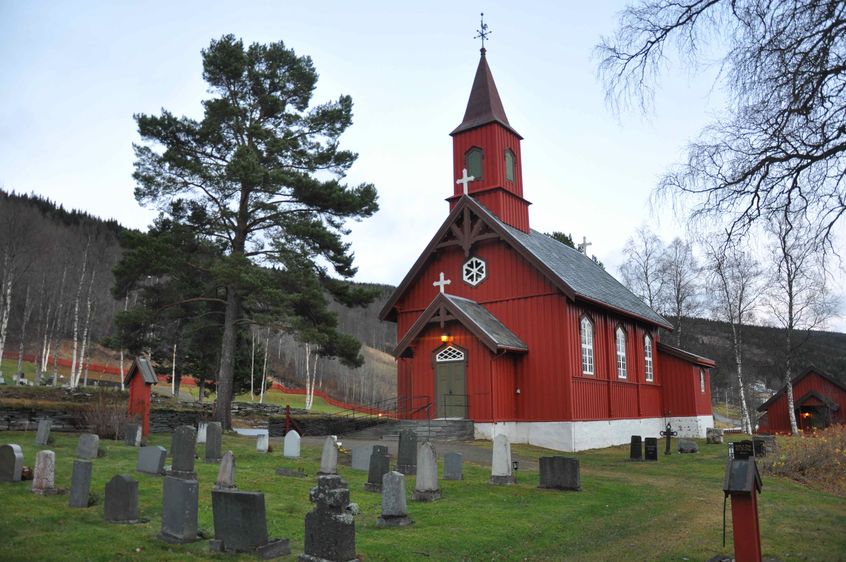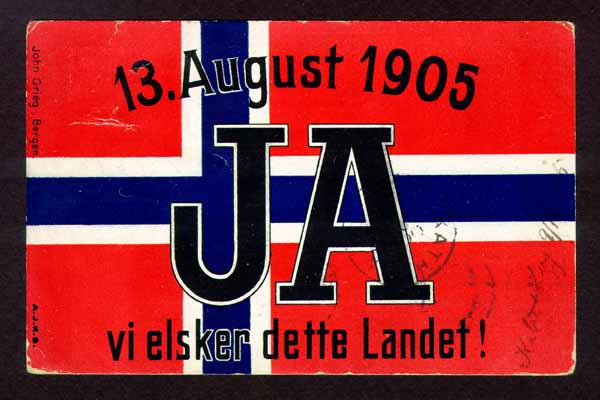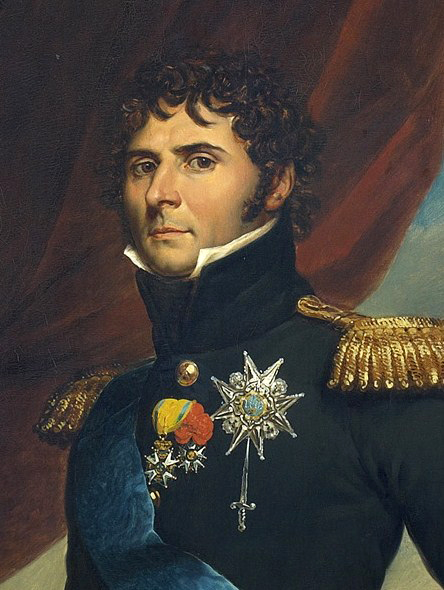|
Norway–Sweden Border
The Norway–Sweden border ( no, Svenskegrensa, sv, Norska gränsen) is a long land national border, and the longest border for both Norway and Sweden. History The border has changed several times because of war. Before 1645, Jämtland, Härjedalen, Idre/Särna parish, and Bohuslän belonged to Norway. The border changes were defined in the Treaty of Brömsebro (1645), the Treaty of Roskilde (1658) and the Treaty of Copenhagen (1660). In 1751 a treaty was signed in Strömstad, defining the border based on field investigations and negotiations done 1738–1751. The border was based on knowledge among local people, mainly which farm belonged to which parish and which parish to which diocese. In the unpopulated mountains, the border mainly followed the water divide. There were disagreements on the parishes of Särna, Idre, Lierne, Kautokeino and Karasjok, which had to be solved by give-and-take. Based on that, in 1752–1765 border cairns were erected between Norway and Swe ... [...More Info...] [...Related Items...] OR: [Wikipedia] [Google] [Baidu] |
Norway Borders
Norway, officially the Kingdom of Norway, is a Nordic country in Northern Europe, the mainland territory of which comprises the western and northernmost portion of the Scandinavian Peninsula. The remote Arctic island of Jan Mayen and the archipelago of Svalbard also form part of Norway. Bouvet Island, located in the Subantarctic, is a dependency of Norway; it also lays claims to the Antarctic territories of Peter I Island and Queen Maud Land. The capital and largest city in Norway is Oslo. Norway has a total area of and had a population of 5,425,270 in January 2022. The country shares a long eastern border with Sweden at a length of . It is bordered by Finland and Russia to the northeast and the Skagerrak strait to the south, on the other side of which are Denmark and the United Kingdom. Norway has an extensive coastline, facing the North Atlantic Ocean and the Barents Sea. The maritime influence dominates Norway's climate, with mild lowland temperatures on the sea ... [...More Info...] [...Related Items...] OR: [Wikipedia] [Google] [Baidu] |
Lierne
Lierne is a municipality in Trøndelag county, Norway. It is part of the Namdalen region, and it is the largest municipality by area in Trøndelag. The administrative centre of the municipality is the village of Sandvika. Other villages include Inderdal, Mebygda, and Tunnsjø senter. The municipality borders Sweden to the south and east. Most of Lierne lies on the Swedish side of the drainage divide between Norway and Sweden. The municipality is the 16th largest by area out of the 356 municipalities in Norway. Lierne is the 310th most populous municipality in Norway with a population of 1,309. The municipality's population density is and its population has decreased by 7.2% over the previous 10-year period. General information The municipality of Lierne was established on 1 January 1874 when it was separated from the large municipality of Snaasen. Initially, the population of Lierne was 1,015. On 1 July 1915, it was divided into two municipalities: Nordli (population: ... [...More Info...] [...Related Items...] OR: [Wikipedia] [Google] [Baidu] |
Norsk Krigsleksikon 1940-45
Norwegian, Norwayan, or Norsk may refer to: *Something of, from, or related to Norway Norway, officially the Kingdom of Norway, is a Nordic country in Northern Europe, the mainland territory of which comprises the western and northernmost portion of the Scandinavian Peninsula. The remote Arctic island of Jan Mayen and t ..., a country in northwestern Europe *Norwegians, both a nation and an ethnic group native to Norway *Demographics of Norway *The Norwegian language, including the two official written forms: **Bokmål, literally "book language", used by 85–90% of the population of Norway **Nynorsk, literally "New Norwegian", used by 10–15% of the population of Norway *The Norwegian Sea Norwegian or may also refer to: Norwegian *Norwegian Air Shuttle, an airline, trading as Norwegian **Norwegian Long Haul, a defunct subsidiary of Norwegian Air Shuttle, flying long-haul flights *Norwegian Air Lines, a former airline, merged with Scandinavian Airlines in 1951 ... [...More Info...] [...Related Items...] OR: [Wikipedia] [Google] [Baidu] |
Sweden During World War II
Sweden maintained Swedish neutrality, its policy of neutrality during World War II. When the war began on 1 September 1939, the fate of Sweden was unclear. But by a combination of its geopolitics, geopolitical location in the Scandinavian Peninsula, ''realpolitik'' maneuvering during an unpredictable course of events, and a dedicated military build-up after 1942, Sweden kept its official neutrality status throughout the war. At the outbreak of hostilities, Sweden had held a neutral stance in international relations for more than a century, since the end of the Napoleonic Wars in 1814 and the invasion of Norway. At the outbreak of war in September 1939, twenty European nations were neutral powers during World War II, neutral. Sweden was one of only nine of these nations to maintain this stance for the remainder of the war, along with Irish neutrality during World War II, Ireland, Portugal in World War II, Portugal, Spain in World War II, Spain, Switzerland during the World Wars ... [...More Info...] [...Related Items...] OR: [Wikipedia] [Google] [Baidu] |
German Occupation Of Norway
The occupation of Norway by Nazi Germany during the Second World War began on 9 April 1940 after Operation Weserübung. Conventional armed resistance to the German invasion ended on 10 June 1940, and Nazi Germany controlled Norway until the capitulation of German forces in Europe on 8 May 1945. Throughout this period, a pro-German government named Den nasjonale regjering (English: the National Government) ruled Norway, while the Norwegian king Haakon VII and the prewar government escaped to London, where they formed a government in exile. Civil rule was effectively assumed by the '' Reichskommissariat Norwegen'' (Reich Commissariat of Norway), which acted in collaboration with the pro-German puppet government. This period of military occupation is, in Norway, referred to as the "war years", "occupation period" or simply "the war". Background Having maintained its neutrality during the First World War (1914–1918), Norwegian foreign and military policy since 1933 was large ... [...More Info...] [...Related Items...] OR: [Wikipedia] [Google] [Baidu] |
World War II
World War II or the Second World War, often abbreviated as WWII or WW2, was a world war that lasted from 1939 to 1945. It involved the World War II by country, vast majority of the world's countries—including all of the great powers—forming two opposing military alliances: the Allies of World War II, Allies and the Axis powers. World War II was a total war that directly involved more than 100 million Military personnel, personnel from more than 30 countries. The major participants in the war threw their entire economic, industrial, and scientific capabilities behind the war effort, blurring the distinction between civilian and military resources. Air warfare of World War II, Aircraft played a major role in the conflict, enabling the strategic bombing of population centres and deploying the Atomic bombings of Hiroshima and Nagasaki, only two nuclear weapons ever used in war. World War II was by far the List of wars by death toll, deadliest conflict in hu ... [...More Info...] [...Related Items...] OR: [Wikipedia] [Google] [Baidu] |
Dissolution Of The Union Between Norway And Sweden In 1905
The dissolution of the union ( nb, unionsoppløsningen; nn, unionsoppløysinga; Høgnorsk, Landsmål: ''unionsuppløysingi''; sv, unionsupplösningen) between the kingdoms of Norway and Sweden under the House of Bernadotte, was set in motion by a resolution of the Storting on 7 June 1905. Following some months of tension and fear of an outbreak of war between the neighbouring kingdoms (then in personal union) – and a 1905 Norwegian union dissolution referendum, Norwegian plebiscite held on 13 August which overwhelmingly backed dissolution – negotiations between the two governments led to Sweden's recognition of Norway as an independent constitutional monarchy on 26 October 1905. On that date, Oscar II of Sweden, King Oscar II renounced his claim to the Norwegian throne, effectively dissolving the Union between Sweden and Norway, United Kingdoms of Sweden and Norway, and this event was swiftly followed, on 18 November, by the accession to the Norwegian throne of Haakon VII, P ... [...More Info...] [...Related Items...] OR: [Wikipedia] [Google] [Baidu] |
Union Between Sweden And Norway
Sweden and Norway or Sweden–Norway ( sv, Svensk-norska unionen; no, Den svensk-norske union(en)), officially the United Kingdoms of Sweden and Norway, and known as the United Kingdoms, was a personal union of the separate Monarchy, kingdoms of Sweden and Norway under a common monarch and common foreign policy that lasted from 1814 until its peaceful Dissolution of the union between Norway and Sweden, dissolution in 1905. The two states kept separate constitutions, laws, legislatures, administration (government), administrations, state churches, armed forces, and currency, currencies; the kings mostly resided in Stockholm, where foreign diplomatic representations were located. The Norwegian government was presided over by viceroys: Swedes until 1829, Norwegians until 1856. That office was later vacant and then abolished in 1873. Foreign policy was conducted through the Ministry for Foreign Affairs (Sweden), Swedish foreign ministry until the dissolution of the union in 1905. ... [...More Info...] [...Related Items...] OR: [Wikipedia] [Google] [Baidu] |
Convention Of Moss
The Convention of Moss (''Mossekonvensjonen'') was a ceasefire agreement signed on 14 August 1814 between the King of Sweden and the Norwegian government. It followed the Swedish-Norwegian War due to Norway's claim to sovereignty. It also became the ''de facto'' peace agreement and formed the basis for the personal union between Sweden and Norway that was established when the Norwegian Storting (Parliament) elected Charles XIII of Sweden as king of Norway on 4 November 1814. The Union lasted until Norway declared its dissolution in 1905. Background In 1814, Denmark–Norway was on the losing side in the Napoleonic wars. Under the Treaty of Kiel, negotiated on 14 January 1814, Norway was ceded to the king of Sweden, of the new House of Bernadotte. In an attempt to take control of their destiny, the Norwegians convened a constitutional assembly at Eidsvoll and, on 17 May 1814, signed the Constitution of Norway. The viceroy and heir to the thrones of Denmark and Norway, ... [...More Info...] [...Related Items...] OR: [Wikipedia] [Google] [Baidu] |
Treaty Of Kiel
The Treaty of Kiel ( da, Kieltraktaten) or Peace of Kiel (Swedish and no, Kielfreden or ') was concluded between the United Kingdom of Great Britain and Ireland and the Kingdom of Sweden on one side and the Kingdoms of Denmark and Norway on the other side on 14 January 1814 in Kiel.Schäfer (2002), p. 137 It ended the hostilities between the parties in the ongoing Napoleonic Wars, where the United Kingdom and Sweden were part of the anti-French camp (the Sixth Coalition) while Denmark–Norway was allied to France. Frederick VI of Denmark joined the anti-French alliance, ceded Heligoland to George III of the United Kingdom, and further ceded the Kingdom of Norway to Charles XIII of Sweden in return for Swedish Pomerania. Specifically excluded from the exchange were the Norwegian dependencies of Greenland, Iceland and the Faroe Islands, which remained in the union with Denmark. (Norway would unsuccessfully contest the Danish claim to all of Greenland in the Eastern Greenland ... [...More Info...] [...Related Items...] OR: [Wikipedia] [Google] [Baidu] |
Lapp Codicil Of 1751
Lapp Codicil of 1751 is an addendum to the Stromstad Treaty of 1751 that defined the Norwegian-Swedish border. It consists of 30 sections.Utvalg fra grensearkiv ca. 1750 /arkivverket.no, retrieved 8 April, 2013 This special codicil formalised the rights of the Lapps or Sámi ( Sami people) to continue with their traditional migratory reindeer herding across the newly formalised border between the then Danish territory of |
Sami People
Acronyms * SAMI, ''Synchronized Accessible Media Interchange'', a closed-captioning format developed by Microsoft * Saudi Arabian Military Industries, a government-owned defence company * South African Malaria Initiative, a virtual expertise network of malaria researchers People * Samee, also spelled Sami, a male given name * Sami (name), including lists of people with the given name or surname * Sámi people, indigenous people of the Scandinavian Peninsula, the Kola Peninsula, Karelia and Finland ** Sámi cuisine ** Sámi languages, of the Sami people ** Sámi shamanism, a faith of the Sami people Places * Sápmi, a cultural region in Northern Europe * Sami (ancient city), in Elis, Greece * Sami Bay, east of Sami, Cephalonia * Sami District, Gambia * Sami, Burkina Faso, a district of the Banwa Province * Sami, Cephalonia, a municipality in Greece * Sami, Gujarat, a town in Patan district of Gujarat, India * Sami, Paletwa, a town in Chin State, Myanmar * Sämi, a village in Lä ... [...More Info...] [...Related Items...] OR: [Wikipedia] [Google] [Baidu] |






